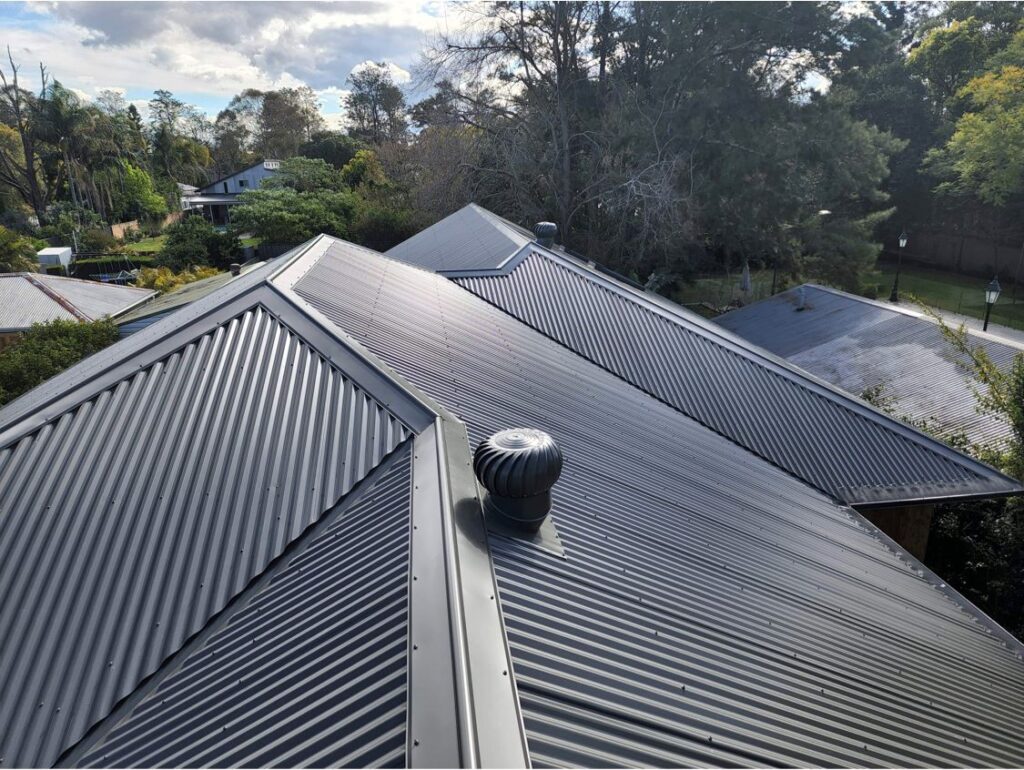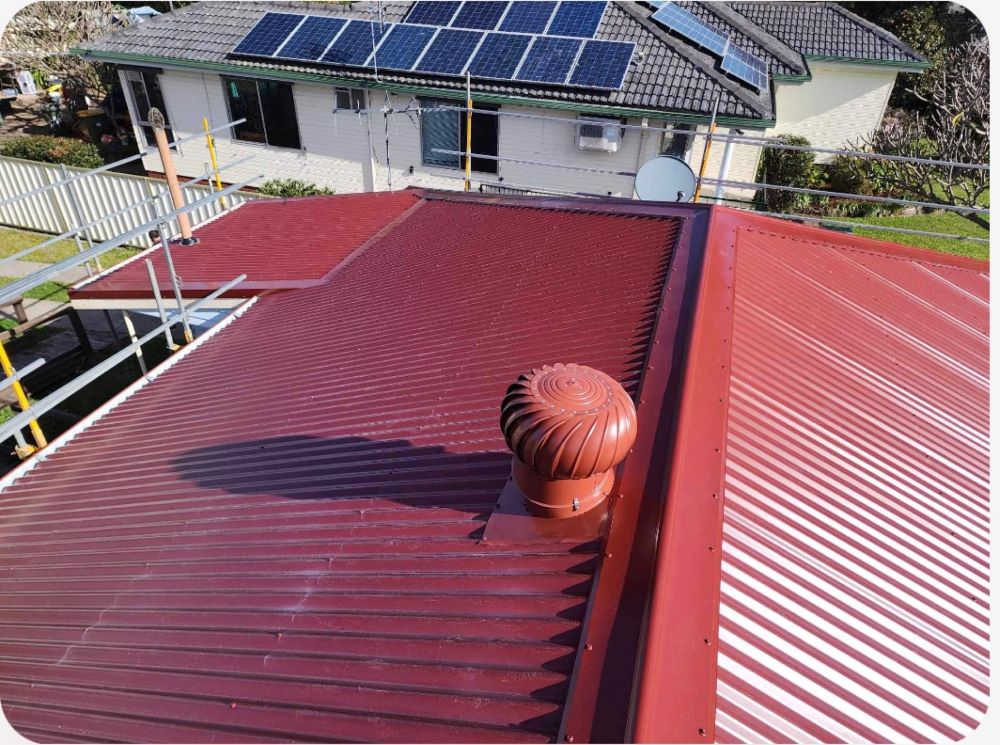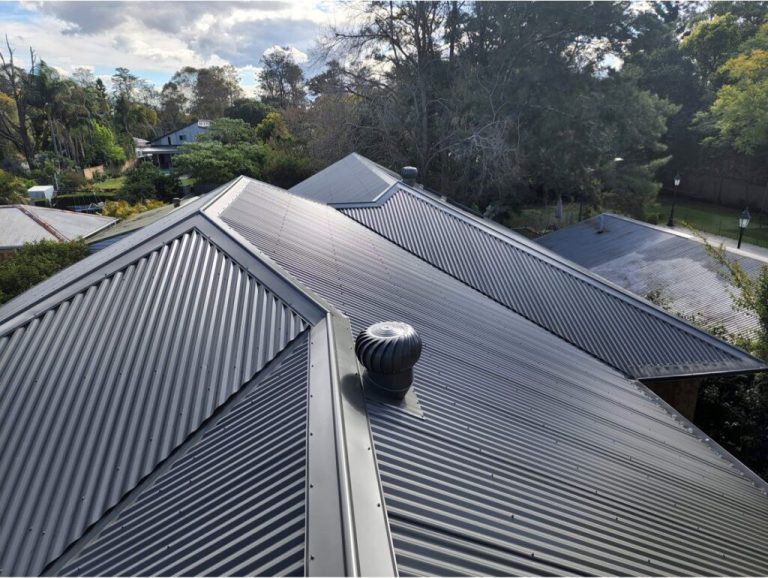Whirlybirds provide an essential and eco-friendly passive ventilation solution that significantly improves indoor comfort for homes across Australia. These innovative devices play a pivotal role in regulating temperature, moisture, and overall air quality within living spaces. In regions characterized by hot climates, which are prevalent in many parts of Australia, whirlybirds are vital for sustaining a cool and comfortable indoor atmosphere. By enhancing air circulation, they effectively prevent heat build-up in the roof space, ensuring that living areas remain enjoyable even during the peak summer months.

Explore the Impact of Whirlybirds on Indoor Climate and Air Quality
Whirlybirds, commonly referred to as roof ventilators, utilize natural wind currents to effectively expel hot air from the roof space. This passive ventilation technique is grounded in aerodynamic principles, allowing for temperature regulation without the high energy consumption associated with air conditioning systems or electric fans. By harnessing wind energy, whirlybirds create a continuous cycle of air movement that not only maintains a balanced indoor climate but also significantly enhances your home’s overall energy efficiency.
Beyond their heat-reducing capabilities, whirlybirds also play an essential role in managing moisture issues within the roof space. Adequate ventilation keeps roof cavities dryer, effectively reducing the risk of mould and mildew that thrive in humid conditions. This proactive approach to moisture management is vital for fostering a healthier living environment, especially for households with members who may be sensitive to allergens or suffer from respiratory conditions.
The improved ventilation offered by whirlybirds perfectly complements the durability and aesthetic appeal of Colorbond roofs that we expertly install. These roofs not only enhance the visual aspect of your home but also work synergistically with whirlybirds to create a cooler indoor climate, ensuring year-round comfort for you and your family.
For homes with hot roof cavities, the integration of ventilation solutions such as whirlybirds or wind turbines is a seamless process. These devices are highly effective at lowering temperatures in roof spaces, leading to noticeable improvements in overall home temperature management. Roof cavities can reach extreme temperatures of up to 60 degrees Celsius; however, with a whirlybird installation, the wind generates a spinning motion that induces a vacuum effect. This suction mechanism effectively pulls out warm air and allows cooler air from outside to enter, establishing a consistent airflow that keeps the roof space comfortably cool.
Unlock the Benefits of Whirlybird Ventilation for Your Home
The effectiveness of whirlybirds hinges on the wind’s ability to create the necessary suction for expelling hot air from your roof space. Under optimal conditions, a standard whirlybird can remove between 100-150 cubic meters of air every hour when wind speeds reach approximately 12 km/h. This makes them especially advantageous for residents along the Central Coast, where coastal breezes foster an ideal environment for passive ventilation solutions like whirlybirds.
Discover the Essential Advantages of Whirlybirds for Roof Ventilation
Installing whirlybirds leads to a remarkable improvement in indoor air quality, a significant decrease in dependence on air conditioning, and the establishment of a naturally cooler living environment. Here are several compelling advantages that make whirlybirds an attractive choice for homeowners:
- Remarkable Temperature Reduction: Research indicates that whirlybirds can lower roof space temperatures by up to 30%. This reduction translates to an internal room temperature decrease of as much as 4°C, offering substantial relief during Australia’s hottest months.
- Substantial Energy Savings: Findings from the Australian government’s energy efficiency studies reveal that effective roof ventilation can reduce air conditioning reliance by up to 20%. By naturally cooling indoor environments, whirlybirds contribute to significant reductions in electricity consumption, ultimately lowering energy costs for homeowners.
- Prevention of Mould and Dampness: Inadequate ventilation is a primary cause of moisture retention and mould growth within roof cavities, often stemming from trapped humidity. The installation of whirlybirds creates the necessary airflow to combat dampness, safeguarding the home from mould-related problems.
- Environmentally Friendly Solution: Whirlybirds are celebrated as a sustainable ventilation option. Operating solely on wind power and requiring no electricity, they represent an eco-conscious choice that aligns with the growing emphasis on sustainable living practices in Australian homes.

Determine the Optimal Quantity of Whirlybirds Needed for Effective Roof Ventilation
The number of whirlybirds required for optimal ventilation largely depends on the total area of your roof. As a general rule, two whirlybirds can effectively ventilate an area of approximately 100 square meters. For a standard four-bedroom home, we typically suggest installing a number of whirlybirds that corresponds to the number of bedrooms. On average-sized homes, three to four whirlybirds are usually sufficient, although larger roofs or those facing particular heat or moisture challenges may require additional units to achieve the best ventilation results.
Our expert team at AWS Roofing specializes in assessing your roof size and configuration to recommend the ideal number of whirlybirds for maximizing ventilation efficiency, ensuring your home remains comfortable throughout the year.
Transform Your New Roof with Whirlybirds for Enhanced Ventilation
Many of our roofing projects involve the strategic integration of additional ventilation through whirlybirds. Available in a variety of Colorbond colours, these systems not only perform exceptionally well but also enhance the aesthetic appeal of your roof. They have become one of our most sought-after solutions for improving home comfort.
Homeowners who choose to install whirlybirds can experience benefits such as improved indoor comfort, lower cooling expenses, and a commitment to sustainable building practices. The AWS Roofing team is ready to assist you in determining the best installation configuration tailored to your specific roof type and local climate conditions.
Count on AWS Roofing for Professional Whirlybird Installation Services
As skilled roof plumbers, AWS Roofing is dedicated to delivering high-quality ventilation solutions tailored to the unique requirements of Australian homes. Our knowledgeable team possesses extensive experience in whirlybird installation, particularly on Colorbond and metal roofing, which demands specialized techniques to ensure a robust and weatherproof installation.
Contact AWS Roofing today for a comprehensive and cost-effective solution to enhance your roof ventilation and improve your home’s comfort.
The Article: Whirlybirds: Enhance Passive Heat and Ventilation in Your Home first appeared on https://writebuff.com.
References:
Whirlybirds: Enhance Passive Heat and Ventilation in Your Home





Your insights on whirlybirds’ role in passive ventilation highlight an often-overlooked yet impactful aspect of sustainable living. Given Australia’s diverse climates, the adaptation of such eco-friendly solutions is commendable and necessary. As someone who has experienced the oppressive heat of summer in the outback, I can attest to the difference that effective ventilation makes in maintaining a comfortable indoor environment.
You make a solid point about how vital effective ventilation is, especially in those intense summer months out in the outback. The heat really can be relentless, and finding ways to keep indoor spaces comfortable is essential.
It’s interesting to hear your perspective, especially coming from someone who has faced the intense heat of the outback. The role of whirlybirds, or roof vents, in passive ventilation is something I feel deserves more attention, particularly in regions like Australia where temperatures can soar.
I appreciate your thoughts on the topic. Living in the outback, I’ve seen firsthand just how oppressive the heat can get, and you quickly learn to find ways to cope. Whirlybirds or roof vents are a bit of an unsung hero in this respect.
Living in the outback sounds like quite the experience, especially dealing with that intense heat. I can imagine how crucial it becomes to have effective cooling solutions like whirlybirds and roof vents. They really do make a significant difference, don’t they? I’ve seen how sometimes we take those little innovations for granted, but in extreme conditions, they become lifesavers.
It’s interesting to hear about your experiences in the outback. I can only imagine how quickly you adapt to that kind of heat. Whirlybirds and roof vents really do make a difference; they’re such practical solutions that sometimes don’t get the recognition they deserve.
Adapting to the heat out here is a bit like training for a marathon—full of sweat, a few questionable choices, and eventually, you start to think that maybe you’re actually enjoying it. Whirlybirds and roof vents are like the unsung heroes of the outback. Honestly, without them, I’d probably end up fried like a piece of bacon on a summer sidewalk.
I can definitely relate to your marathon comparison—adapting to the heat is a real challenge, and it’s kind of funny how we can find enjoyment in the struggle. The first few days of heat always feel like a shock to the system, and you start gauging your choices based on what might just keep you from melting.
I really hear you on that first jolt of heat. It’s as if the weather flips a switch, and suddenly everything feels intense. That initial shock definitely shifts how you approach daily life—like choosing lighter meals or finding the closest shade. I’ve found it interesting how that discomfort can lead to small pleasures, like enjoying a cold drink after being outside. It’s a good reminder of how adaptable we are. Have you found any go-to strategies that help you tackle those hot days? I’m always curious to hear what others do to stay cool and comfortable.
It’s interesting how adapting to heat can feel like a rite of passage, isn’t it? I remember moving to a much warmer region a few years back, and the first few weeks felt like I was in a sauna that just wouldn’t quit. At first, I was all about the chill drinks and air conditioning, but as time went on, I learned to appreciate the little things—like those whirlybirds and roof vents you mentioned. They really do work wonders, and it’s almost comforting to hear them whir on those hot days.
I appreciate your thoughts on adapting to the outback’s heat. It really is a unique experience, and there’s a distinct rhythm to life when you’re out there. The way you quickly learn to manage the temperature makes a significant difference in both comfort and productivity.
You’ve hit the nail on the head about whirlybirds and roof vents—they’re the unsung heroes of outback living. You know, it’s like having a little personal weather wizard spinning away up there, casually dismissing the heat as if it’s no big deal. I’ve come to cherish those moments when you walk into a room, and it feels like you’ve just stepped into a cool breeze as opposed to a sauna.
Isn’t it wild how we take those roof vents for granted? They’re like the quiet MVPs of our homes, working tirelessly while we lounge about, blissfully unaware. It’s pretty magical when you get that refreshing blast of air, kind of like a surprise hug in the middle of a heatwave.
I love how you put it—those little whirlybirds really do feel like weather wizards. It’s amazing how something so simple can make such a big difference in our day-to-day comfort, especially out here in the outback. When it’s sweltering outside, walking into a room that feels like a cool breeze is like finding an oasis in the middle of the desert.
It’s true, adapting to the heat out there is quite the experience. You discover so much about what your body can handle. I’ve found that little things like staying hydrated and taking breaks in the shade can really help manage the heat. Whirlybirds and roof vents are indeed unsung heroes; they really help circulate air and lower indoor temperatures, which can often be a game-changer.
It’s great to hear that you found the discussion engaging! The intense heat of the outback is like one of those relentless friends who overstays their welcome at a barbecue. You know, the kind that keeps asking for just one more sausage while you’re sweating and hoping they might just take their leave.
I love that analogy; it really captures the essence of the outback heat perfectly. It’s almost like the environment has its own personality, right? I’ve spent time in places where the heat can feel oppressive, and it really makes you appreciate the little things, like a cool breeze or a frosty drink.
I love that analogy; it really captures the essence of the outback’s heat. It’s funny how nature can sometimes be as stubborn as those friends you can’t quite shoo away. Speaking of heat, it reminds me of an article I read about how extreme temperatures are affecting not just outdoor gatherings but our overall health and wellness.
Since we’re all too familiar with that relentless heat, you might appreciate some insights on keeping your space cool and comfortable while the outback throws its best barbecue vibes our way.
‘HVAC Insights: Brisbane Heating, Ventilation & Air Conditioning’
https://cleanyourhome.com.au/hvac-insights-brisbane-heating-ventilation-air-conditioning/.
It’s fascinating how something as simple as whirlybirds can make such a significant difference, especially in places like the Australian outback. I’ve experienced that intense heat myself, and it’s interesting how the environment can shape our understanding of what we need for comfort and well-being.
I found a great read that dives into how whirlybirds can really enhance ventilation and keep indoor spaces comfortable, which seems especially relevant for those scorching summer days.
‘Whirlybirds Improve Home Ventilation and Temperature Control’
https://cleanyourhome.com.au/whirlybirds-improve-home-ventilation-and-temperature-control/.
I totally get what you’re saying about the heat in the outback. It can really wear you down if your living space isn’t set up to handle it. Those whirlybirds really can make a world of difference, and what I find fascinating is how we’re tapping into old concepts, like passive ventilation, to creatively combat the climate challenges we face today.
You’re spot on about the heat in the outback—it’s like trying to fry an egg on the pavement, except the egg probably wouldn’t want to be there either. Those whirlybirds are the unsung heroes of climate control, spinning away while we’re left sweating it out.
You bring up a great point about the importance of effective ventilation, especially in those hot summer months out in the outback. I can only imagine how stifling it can get when the mercury shoots up. Whirlybirds really can make a difference, can’t they? It’s fascinating how a simple rotating device can create such a breeze and help push that hot air out, allowing cooler air to flow in.
It’s great to hear your firsthand experience with the impact of ventilation, especially in the challenging Australian heat. Whirlybirds really do play an essential role when it comes to creating a more comfortable indoor environment. They harness the natural forces of wind, helping to circulate air effectively, and this can make a significant difference in how we experience our living spaces.
I find the discussion around whirlybirds and their role in passive ventilation particularly intriguing, especially considering Australia’s diverse climate conditions. When I moved to a coastal town a few years ago, I quickly learned about the challenges of maintaining indoor comfort during the sweltering summer months. Like many, I initially turned to air conditioning as a quick fix, but I’ve since grown more aware of the environmental impact and energy costs associated with that option.
You bring up an important point about the reliance on air conditioning, especially in places that face extreme heat during the summer. It’s a routine that many of us fall into—turning to the quickest solution to beat the heat without really considering the longer-term implications.
It’s great to hear about your experience with coastal living. Balancing indoor comfort in a hot climate can feel like a puzzle, especially when you want to be mindful of energy use. Whirlybirds offer a compelling solution by harnessing natural airflow, which not only cools but also helps to refresh the air inside.
It really is a balancing act, isn’t it? I’ve found that in hot climates, the design of our living spaces can either enhance or detract from our comfort levels. Whirlybirds are definitely a clever solution; I love how they naturally promote airflow without relying too heavily on air conditioning. It makes a difference in both energy consumption and air quality.
I recently came across some insights on how whirlybirds can really enhance indoor comfort while keeping energy use in check, which might add to your coastal living strategy.
‘Whirlybirds Improve Home Ventilation and Temperature Control’
https://cleanyourhome.com.au/whirlybirds-improve-home-ventilation-and-temperature-control/.
The challenges you’ve faced with maintaining indoor comfort, especially in a coastal climate, are shared by many in Australia where our summer heat can be relentless. It’s a common path to first reach for air conditioning—quick and effective in cooling down a space—but as you noted, it often comes with a hefty environmental price tag as well as increased energy costs.
I can definitely relate to the struggle of maintaining indoor comfort in a coastal climate; the heat can feel unyielding at times. It’s so tempting to turn to air conditioning for that quick relief. I admired how you captured the dilemma. It’s that balance between immediate comfort and long-term sustainability that many of us grapple with.
If you’ve been grappling with indoor humidity in that relentless summer heat, there’s some valuable insight I came across that could help tackle those issues without relying solely on air conditioning.
‘Ducted Solutions: Enhance Home Humidity Control’
https://cleanyourhome.com.au/ducted-solutions-enhance-home-humidity-control/.
I completely resonate with your observations about the relentless summer heat in Australia, especially when you look at it through the lens of maintaining indoor comfort. For many of us, the instinct is to reach for the air conditioning, as it’s certainly the quickest way to find relief from those sweltering days. But as you mentioned, both the environmental impact and rising energy costs are significant, and they can make you pause and rethink that choice.
It’s great to hear your thoughts on whirlybirds and their importance in passive ventilation. Living in a coastal town definitely brings unique challenges in keeping a home comfortable, especially during those hot summer days. It’s interesting how many people initially seek out air conditioning without considering alternatives.
It’s great to hear your thoughts on whirlybirds and passive ventilation, especially given your experience in a coastal town. You’re right to point out the challenges of keeping indoor spaces comfortable during those oppressive summer days. Many people find themselves in that cycle of relying on air conditioning, not realizing the toll it can take on both the environment and their energy bills.
It’s great to hear about your experiences with comfort and ventilation, especially in a coastal town where humidity can really affect how we feel indoors. Air conditioning might seem like the easiest solution, but the drawbacks—both environmental and cost—are certainly worth considering.
Your insights into the role of whirlybirds in promoting indoor comfort and air quality resonate with the growing awareness of sustainable living practices. The importance of passive ventilation cannot be overstated, particularly in a country like Australia, where extreme heat can compromise both comfort and health.
It’s interesting to think about how much our built environment impacts our well-being, especially in regions like Australia where temperatures can be extreme. The role of whirlybirds in enhancing indoor air quality really draws attention to how sometimes simple solutions can make a significant difference in our comfort levels without relying heavily on air conditioning.
This post highlights some critical advantages of whirlybirds that often go overlooked when discussing home ventilation options. I appreciate how you’ve emphasized their eco-friendly nature, especially in the context of Australia’s typically arid climate. Having lived in a region where summer heat can become oppressive, I can personally attest to the comfort that effective ventilation brings to a home.
You raise a great point about the often underrated benefits of whirlybirds, especially in challenging climates like the ones we see in Australia. It’s true that they can make a significant difference when the heat turns up. There’s something quite satisfying about finding ways to keep our homes cool without relying too heavily on energy-consuming systems.
It’s great to hear your personal experience with summer heat and the relief that proper ventilation can bring. Living in Australia, where things can heat up quickly, makes those advantages of whirlybirds really resonate. They not only help keep our homes cooler but also do so without pushing up energy bills, which is a powerful combination, especially in our climate.